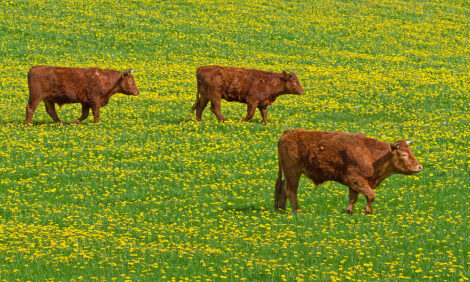



AHDB examines impact of UK-NZ free trade agreement
Sensitive markets, such as beef, sheep meat and cheese, were consideredA special report from the Agriculture and Horticulture Development Board (AHDB) evaluates the implications of the Free Trade Agreement (FTA) between New Zealand and the UK. Under the agreement, which was finalised on 28 February 2022, NZ has agreed to eliminate all tariffs on UK products from Day 1 of the agreement entering into force. The UK, in return, has agreed to eliminate 96.7% of tariffs for NZ products entering the UK from Day 1.
There are some exceptions, however, including sensitive agricultural products, such as beef, sheep meat and cheese. For these products, a transitional tariff rate quota (TRQ) will be applied.
For beef, tariffs will be eliminated over a period of ten years, according to the AHDB report. During this time, a TRQ of 12,000 MT in Year 1, rising in equal increments to a TRQ of 38,820 MT in Year 10, will be applied. Any product exceeding the TRQ will be subject to the World Trade Organisation’s (WTO) most favoured nation tariff rate (MFN).
Between years 11 and 15, a product-specific safeguard will be in place, limiting beef imports into the UK to 43,056MT in Year 11 and rising in equal increments to 60,000 MT in year 15. Any product exceeding this safeguard will be subject to a 20% tariff. This safeguard will be removed after year 15, at which time beef trade will be fully liberalised.
TRQs have been expressed in volume terms, not carcase weight equivalent (CWE) which is an important consideration for the UK market, in particular for the beef sector.
In the dairy sector, butter tariffs will be eliminated over five years in six equal reductions. The transitional quota will open at 7,000 MT and increase in equal instalments to 15,000MT in year five.
Similarly, cheese will become tariff free over five years, with the transitional quota starting at 24,000 MT and rising in equal instalments to 48,000 MT by year five.
Trade in both butter and cheese will be fully liberalised by year six onwards.
In order to fully understand the implications of the deal, AHDB has been examining the potential impact in partnership with Harper Adams university using the same approach that was developed for the Australian FTA analysis. The results of this impact assessment will be available later this year.


